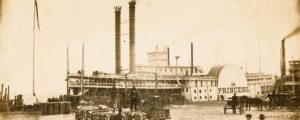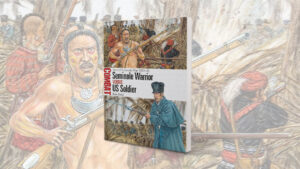When they brought him to Washington, his speech and memory gone and his identity a mystery, the pieces of the puzzle seemingly began to fall into place with the arrival of a wife whose soldier-husband was still missing.
The Civil War was over…but not quite yet for the mystery man found in Tallahassee, Fla., by Union troops more than a year before his trip to a hospital for the insane in the nation’s capital.
Still, with the arrival of Elizabeth E. Houghton from Ontario County, N.Y., there was hope that he could be identified as her missing husband, Thomas, last seen as his outfit, Company H, 140th New York Volunteer Infantry, was advancing on Fredericksburg, Va. Private Houghton, taken ill “on the march,” referred to a hospital ambulance, according to the Union Army’s acting adjutant general, Edward D. Townsend. “And he had not been heard of afterward,” wrote Townsend in his postwar book Anecdotes of the Civil War in the United States. But now, with Elizabeth’s arrival, so many pieces of the puzzle did fit.
He looked a bit different, the missing soldier’s wife admitted, but then she hadn’t seen him in quite a while. And he probably had been through all kinds of ordeals as a prisoner so far down south.
More positively, “The age and description of Houghton, as given by the muster rolls, corresponded with the appearance of the unknown man, and with Mrs. Houghton’s account of her husband,” Townsend wrote. Even more convincing were his moles and scars. For instance, the newspapers of the day had reported he had a mole on his back. Elizabeth pointed exactly where it should be.
No, said a doctor attending the confused man, the mole was much higher up.
Not so, the wife insisted.
With the man’s back uncovered, examination showed that she was right, the doctor was wrong.
Then there were the telltale scars, such as those on his shin bone.
Well, she explained, one time before her husband went off to war, he mounted a stool and reached for a saw on a beam above. The stool tipped over and the saw fell across his leg, with cuts resulting. “Thus those curious scars on the unknown man were satisfactorily accounted for,” wrote Townsend.
Well, she was asked, what about those small scars on his breast and back?
One very hot day, she explained, her husband was washing sheep in a river while wearing a red flannel shirt. He came home with skin eruptions on his chest and back that required medical treatment and left scars. The surmise was that a toxic substance in the red dye might have caused his skin to break out.
So much for those scars, but what about these, she was asked, on his arms?
Those she had never seen before, she answered with apparent honesty.
But they were recently incurred, the doctors acknowledged. She couldn’t have seen them at all.
And so it went. Everything added up. Like her husband, the mystery man had blue eyes. Just like her husband, his toes were bent under—from habitually wearing shoes that were too short. And his hair looked the same under a microscope as a lock of her husband’s hair, except for a slight touch of added gray, which would have been natural considering his long absence.
The mental patient found in Florida also had long, tapered thumbs, and when sitting doing nothing he had a habit of twirling them—her missing husband all over again.
In sum, even though he didn’t—or couldn’t—speak a word and only barely acknowledged her presence during visits, everything seemed to fit.
All this was determined in 1867, but Mrs. Houghton went back home without him, since he still wasn’t mentally recovered. Then, in 1869, came a report that the patient had started speaking. “When asked his name this morning [a few days later], he distinctly replied that it is ‘Thomas B. Houghton,’” reported Superintendent C.H. Nichols. Asked to name his wife, he couldn’t, but he did say he was from New York.
Case closed?
The authorities in charge thought so, but they didn’t count on the day somewhat later when someone addressed him by the Houghton name and, wrote Townsend, “he laughed and said that was not his name.” Worse yet, he soon denied ever being a member of the 140th New York. Far from it! As he slowly recovered his memory, it turned out he had been an overseer supervising slaves on a Georgia plantation. He had gone to Florida on business “and had been drafted into a [Confederate] company of Florida conscripts…he lost his mind soon after, and did not remember anything.”
Further federal investigation convinced the authorities that was the real story, and they sent him back home to pick up the pieces of his life. Townsend never did say what became of Thomas Houghton, if known, or his wife Elizabeth. Presumably they—she alone, more likely—had pieces to pick up, too.
Note: According to Brian A. Bennett, author of the critically acclaimed history of the 140th New York (Sons of Old Monroe: A Regimental History of Patrick O’Rourke’s 140th N.Y. Volunteer Infantry), the only clue to Private Houghton’s fate are conflicting official records listing him as (1) the victim of a fatal illness in September 1862, and (2) as a deserter at Warrenton, Va., two months later!
Originally published in the September 2006 issue of Military History. To subscribe, click here.




